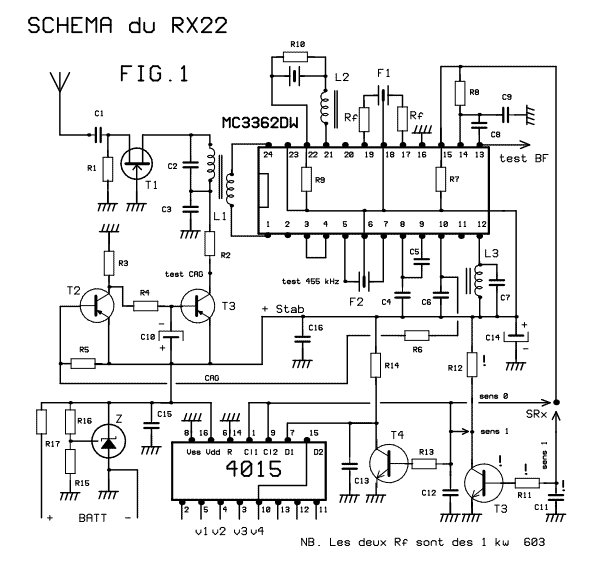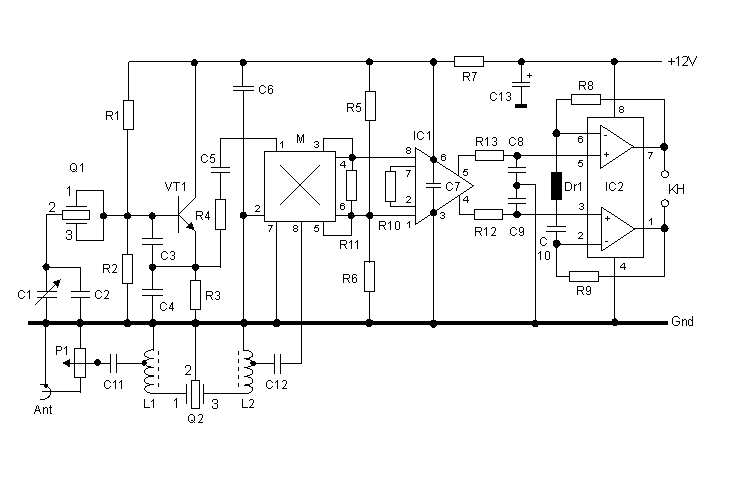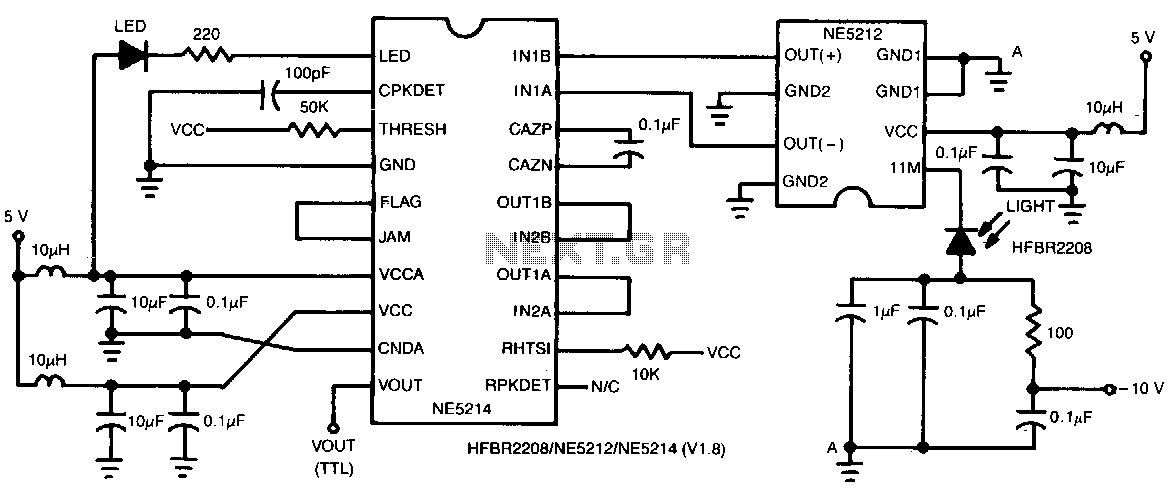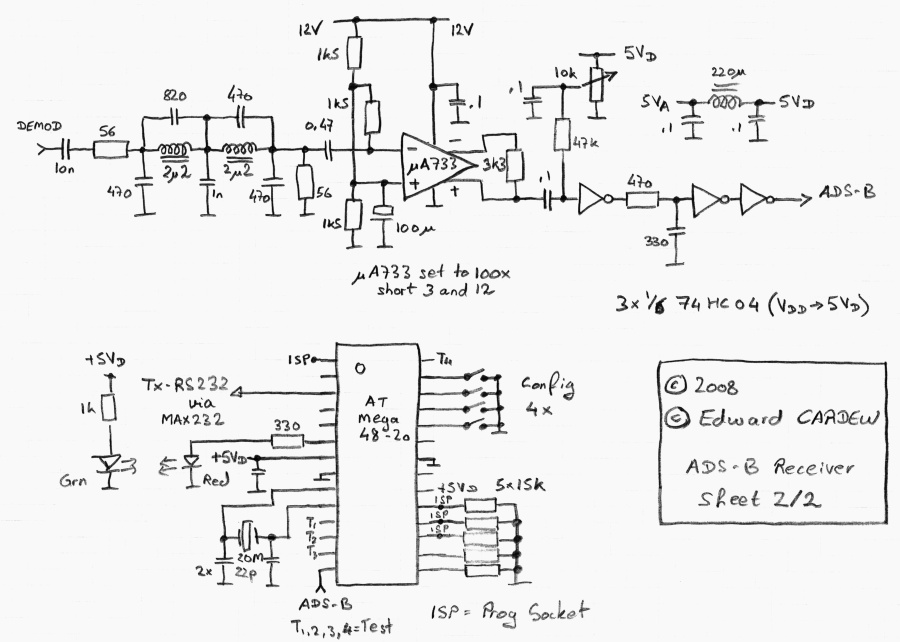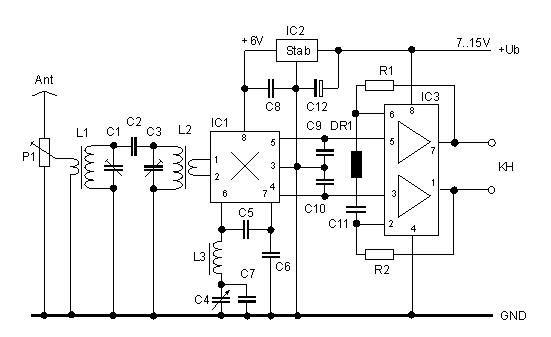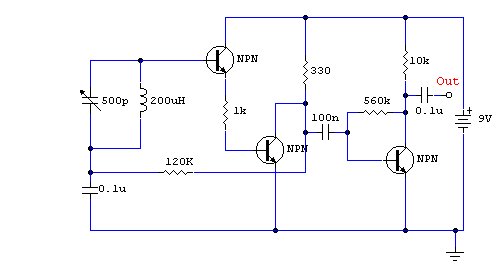
FM Receiver
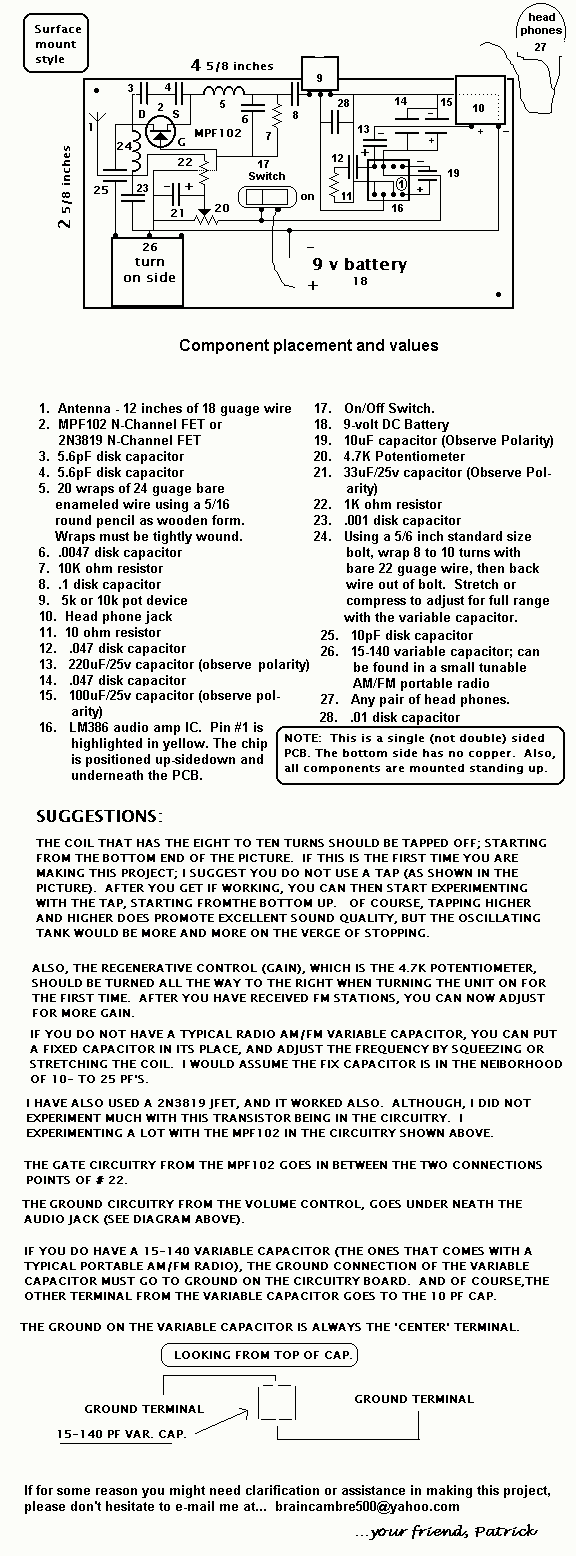
An FM regenerative receiver using a single FET and one audio amplifier IC.
The described circuit is an FM regenerative receiver, which is designed to demodulate frequency modulated signals. The core component of this receiver is a Field Effect Transistor (FET), which is utilized for its high input impedance and efficiency in RF applications. The FET operates in a regenerative mode, where a portion of the output signal is fed back into the input, effectively amplifying the received signal and improving sensitivity.
The regenerative circuit typically includes an LC tank circuit, which is tuned to the desired FM frequency. This tank circuit consists of an inductor and a capacitor, forming a resonant circuit that selects the frequency of interest while rejecting others. The tuning of this circuit can be adjusted using a variable capacitor, allowing the user to scan through different FM stations.
The output from the FET is then connected to an audio amplifier IC. This component is responsible for further amplifying the demodulated audio signal so that it can drive a speaker or headphones. The audio amplifier IC may include features such as volume control, tone adjustment, and power output capabilities suited for driving loads directly.
In terms of power supply, the circuit may operate on a low voltage DC source, which is typical for portable applications. Proper bypass capacitors should be included near the power supply pins of the FET and audio amplifier IC to filter out any noise and ensure stable operation.
Overall, this FM regenerative receiver circuit provides a compact and efficient solution for receiving FM broadcasts, making it suitable for various applications, including hobbyist projects and educational demonstrations in electronics.An FM regenereative receiver using a single FET and one audio amplifier IC. 🔗 External reference
The described circuit is an FM regenerative receiver, which is designed to demodulate frequency modulated signals. The core component of this receiver is a Field Effect Transistor (FET), which is utilized for its high input impedance and efficiency in RF applications. The FET operates in a regenerative mode, where a portion of the output signal is fed back into the input, effectively amplifying the received signal and improving sensitivity.
The regenerative circuit typically includes an LC tank circuit, which is tuned to the desired FM frequency. This tank circuit consists of an inductor and a capacitor, forming a resonant circuit that selects the frequency of interest while rejecting others. The tuning of this circuit can be adjusted using a variable capacitor, allowing the user to scan through different FM stations.
The output from the FET is then connected to an audio amplifier IC. This component is responsible for further amplifying the demodulated audio signal so that it can drive a speaker or headphones. The audio amplifier IC may include features such as volume control, tone adjustment, and power output capabilities suited for driving loads directly.
In terms of power supply, the circuit may operate on a low voltage DC source, which is typical for portable applications. Proper bypass capacitors should be included near the power supply pins of the FET and audio amplifier IC to filter out any noise and ensure stable operation.
Overall, this FM regenerative receiver circuit provides a compact and efficient solution for receiving FM broadcasts, making it suitable for various applications, including hobbyist projects and educational demonstrations in electronics.An FM regenereative receiver using a single FET and one audio amplifier IC. 🔗 External reference
